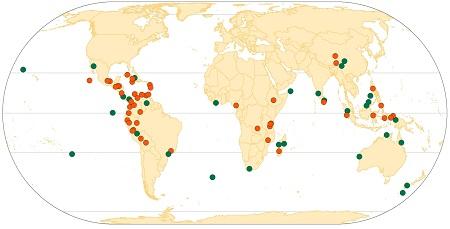Digital wellbeing should be a public health priority for the Arab region
21 October 2025
Published online 18 November 2013

National parks and other places reserved for the protection of species cover over 13% of the Earth's land but only a few dozen sites make up the world's most valuable protected areas for preventing a species' extinction, according to a new study in Science.
A team of scientists, including Simon Stuart, chair of the IUCN Species Survival Commission and an affiliate of Al Ain Zoo in the UAE, evaluated 173,461 designated or proposed protected areas.
Based on the distribution of birds, amphibians, and terrestrial mammals, the team identified 137 protected areas in 78 clusters deemed irreplaceable for ensuring the continued survival of certain endangered species. .
The Socotra World Heritage Site in Yemen is one such protected area included in the study. It is home to species of plants and birds that are not found anywhere else, including the Socotra Buzzard and the Abd Al Kuri Sparrow, and is therefore largely responsible for their survival.
Local conservation management often focuses on charismatic species in the hope of benefiting an ecosystem, a strategy that can sometimes be detrimental to other, less iconic species. The results of this study can help inform more effective conservation plans by identifying the species for which each area has the greatest responsibility.
"Protected areas can only fulfil their role in reducing biodiversity loss if they are effectively managed," says Stuart. "Given limited conservation budgets, that is not always the case, so governments should pay particular attention to the management effectiveness of highly irreplaceable protected areas."
doi:10.1038/nmiddleeast.2013.216
Stay connected: